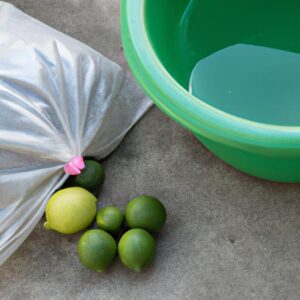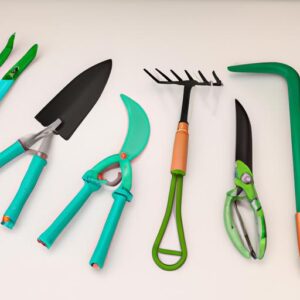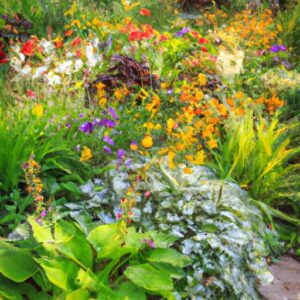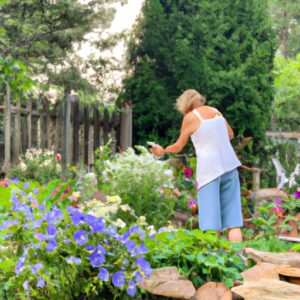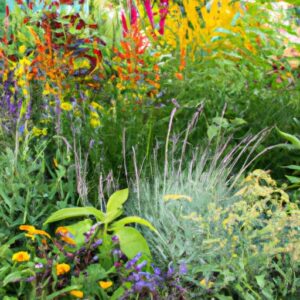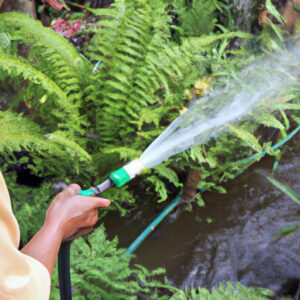Gardening is more than just a hobby; it’s a therapeutic and rewarding experience that allows us to connect with nature. However, one common concern that often arises is the cost associated with gardening. How much should gardening actually cost? Well, the answer isn’t as straightforward as we might hope. There are several factors that influence the expenses involved in creating your dream garden. But worry not, as this article aims to shed light on this topic and help you budget effectively for your gardening endeavors.
A. Importance of Gardening
Gardening is not only about beautifying your surroundings; it offers a myriad of benefits that go beyond aesthetics. It allows you to grow your own organic produce, ensuring a fresh and healthy food source. Moreover, gardening has been proven to reduce stress, boost mental health, and improve overall well-being. So, the value of gardening extends far beyond the dollars spent.
B. Factors Influencing Gardening Cost
Understanding the factors that impact gardening expenses is crucial for planning your budget effectively. The size and complexity of your garden play a significant role in determining the overall cost. Additionally, the types of plants and flowers you choose, as well as your geographical location and climate, can influence the cost of maintaining your garden. It’s important to take these factors into account to ensure you have a realistic estimation of the expenses involved.
C. Purpose of the Article
The purpose of this article is to guide you through the process of determining how much you should allocate for your gardening expenses. We will explore the average cost of gardening, factors that affect the cost, and provide practical tips to minimize expenses without compromising on the beauty and productivity of your garden. By the end of this comprehensive guide, you’ll be equipped with the knowledge and tools necessary to create and maintain a stunning garden that suits your budget.
Stay tuned for the next section, where we will delve into the average cost of gardening and examine various expenses you should consider. Remember, creating a beautiful garden doesn’t have to break the bank!
Average Cost of Gardening
When it comes to gardening, understanding the average cost of various expenses is essential for effective budgeting. Let’s examine the different aspects that contribute to the overall cost of creating and maintaining a beautiful garden.
A. Examination of Various Gardening Expenses
-
Tools and Equipment:
Quality gardening tools are indispensable for achieving desirable results. From shovels and pruners to rakes and hoses, investing in durable tools is a smart choice. While initial costs may vary, these tools can last for years, making them a worthwhile investment. -
Seeds and Plants:
The cost of seeds and plants depends on factors such as rarity, quality, and the type of garden you desire. Opting for locally sourced or heirloom seeds can be more cost-effective, and consider starting from seeds rather than purchasing mature plants to save money. -
Soil and Fertilizers:
Healthy soil is the foundation of a thriving garden. The cost of soil amendments and fertilizers can vary based on the size of your garden and the specific needs of your plants. Consider composting kitchen scraps and yard waste to create nutrient-rich soil without additional expenses. -
Watering Systems:
Efficient watering is crucial for plant health, and investing in a suitable watering system can save both water and money in the long run. Options range from traditional watering cans to drip irrigation systems, with costs varying based on the complexity of your garden and water conservation goals. -
Pest Control:
Protecting your plants from pests is essential, and the cost of pest control methods can vary. Consider natural and organic options to minimize expenses. Companion planting, insect-repelling plants, and homemade remedies can be effective alternatives to costly chemical pesticides. -
Maintenance and Labor Costs:
Regular maintenance, such as pruning, weeding, and lawn care, requires time and effort. If you prefer to outsource these tasks, labor costs should be factored into your gardening budget. However, many gardeners find joy in tending to their own gardens, making it a cost-effective and rewarding endeavor.
Understanding these various gardening expenses will help you estimate the average cost of your garden. In the next section, we will explore the factors that can influence gardening costs, allowing you to tailor your budget accordingly. Remember, an informed approach will ensure a flourishing garden without breaking the bank!
Factors Affecting Gardening Cost
When it comes to determining the cost of gardening, several factors come into play. Understanding these factors will help you assess and plan your garden budget more effectively. Let’s explore the key elements that influence gardening expenses:
A. Size and Complexity of the Garden
The size of your garden is a significant factor in determining the overall cost. A larger garden typically requires more plants, soil, fertilizers, and maintenance. Additionally, if your garden involves complex landscaping features like ponds, pathways, or structures, it may require additional expenses for construction and maintenance.
B. Type of Plants and Flowers
The selection of plants and flowers for your garden can greatly impact your budget. Certain plants, especially exotic or rare species, tend to be more expensive to purchase and maintain. Additionally, some plants may have specific soil or climate requirements, leading to additional costs for specialized soil or temperature control equipment.
C. Climate and Geographical Location
The climate and geographical location where your garden is situated play a vital role in determining the cost. Different climates require different approaches to gardening, including the need for specific plants, irrigation systems, or protective measures against extreme weather. Understanding the unique requirements of your region will help you plan and budget accordingly.
D. Professional Services vs. DIY Gardening
Deciding between hiring professional services or taking a DIY approach impacts the cost of gardening. While hiring professionals may require a higher upfront cost, it can save you time and effort in the long run. On the other hand, opting for a DIY approach can be cost-effective, but it requires more hands-on involvement and a learning curve. Consider your budget and the level of expertise you possess when making this decision.
By considering these factors, you can gain a better understanding of the various elements that influence gardening costs. In the next section, we will discuss effective budgeting strategies to ensure you make the most of your gardening journey without breaking the bank.
Budgeting for Gardening
When it comes to gardening, having a well-planned budget is essential to ensure that you can achieve your gardening goals without overspending. Here are some key steps to help you effectively budget for your gardening endeavors.
A. Assessing Personal Gardening Goals
Before diving into the financial aspect of gardening, it’s crucial to assess your personal gardening goals. Ask yourself what you hope to achieve with your garden. Are you looking to grow your own vegetables? Do you want to create a picturesque flower bed? Understanding your objectives will help you prioritize your expenses and allocate funds accordingly.
B. Determining Available Resources
Once you have defined your gardening goals, take stock of the resources available to you. This includes both financial resources and physical assets such as tools, equipment, and existing plants. Assessing what you already have will help you identify any gaps that need to be filled and give you a clearer idea of the additional expenses you may incur.
C. Allocating Funds for Different Gardening Aspects
Now that you have a clear understanding of your goals and available resources, it’s time to allocate funds for different aspects of your garden. This includes expenses such as purchasing tools and equipment, buying seeds or plants, investing in soil and fertilizers, setting up watering systems, and considering the costs of pest control and maintenance.
Prioritize your expenses based on your gardening goals. If growing your own vegetables is a priority, allocate a larger portion of your budget towards acquiring high-quality seeds or starter plants and organic fertilizers. If you’re more focused on creating a visually appealing garden, invest in quality soil, plants, and decorative elements such as ornaments or garden structures.
Remember, budgeting for gardening is a continuous process. As your garden evolves, so will your expenses. Regularly review and adjust your budget to ensure you’re making the most of your resources while keeping costs under control.
In the next section, we will provide you with practical tips to minimize gardening expenses without compromising the beauty and productivity of your garden. Stay tuned to discover how you can garden on a budget!
Tips to Minimize Gardening Expenses
Gardening doesn’t have to be an expensive endeavor. There are several strategies you can employ to minimize your gardening expenses without compromising on the beauty and productivity of your garden. Let’s explore some cost-effective methods and affordable alternatives that can help you create a stunning garden within your budget.
A. Opting for Cost-Effective Gardening Methods
-
Composting and Mulching: Instead of purchasing expensive fertilizers and soil, consider creating your own compost using kitchen scraps and yard waste. Compost not only enriches the soil but also reduces the need for chemical fertilizers. Additionally, using organic mulch, such as wood chips or straw, can help retain moisture and suppress weed growth.
-
Saving and Reusing Seeds: Rather than buying new seeds every season, save seeds from your existing plants. This not only saves money but also ensures that your garden remains diverse and adapted to your specific conditions. Properly store and label the seeds to ensure their viability for future use.
-
Using Natural Pest Control Methods: Avoid costly chemical pesticides by opting for natural alternatives. For instance, companion planting, where certain plants are grown together to deter pests, can be an effective strategy. Additionally, introducing beneficial insects like ladybugs and lacewings can help control harmful pests naturally.
-
Water Conservation Techniques: Implementing water-saving techniques can significantly reduce your water bill. Consider installing a drip irrigation system or using soaker hoses to deliver water directly to the plant roots. Mulching can also help retain moisture in the soil, reducing the frequency of watering.
B. Seeking Affordable Alternatives
-
Seed Exchanges and Community Gardens: Join local seed exchanges or community gardens to access a variety of plants and seeds at a lower cost. These initiatives foster a sense of community and provide an opportunity to share knowledge and resources with fellow gardeners.
-
Online Discounts and Sales: Keep an eye out for online discounts and sales on gardening supplies, tools, and plants. Many websites offer seasonal promotions and clearance sales, allowing you to save money while still acquiring high-quality gardening essentials.
-
Local Nurseries and Farmers’ Markets: Support local businesses by purchasing plants and supplies from nearby nurseries and farmers’ markets. Not only can you find unique and locally adapted plants, but you may also get expert advice from knowledgeable staff.
-
Sharing Tools and Equipment with Neighbors: Instead of buying expensive tools and equipment that you may only use occasionally, consider sharing with your neighbors. This not only saves money but also promotes community bonding and reduces unnecessary consumption.
By implementing these cost-saving tips and exploring affordable alternatives, you can enjoy the pleasures of gardening without breaking the bank. Stay tuned for the conclusion, where we will recap the key points and encourage you to embark on your gardening journey within a reasonable budget.
Conclusion
In conclusion, determining how much gardening should cost is not a one-size-fits-all answer. It depends on various factors such as the size and complexity of your garden, the type of plants you choose, your geographical location, and your personal gardening goals. However, by understanding these factors and budgeting accordingly, you can create a beautiful garden that fits your financial capabilities.
Throughout this comprehensive guide, we have explored the average cost of gardening, the factors that influence gardening expenses, and practical tips to minimize costs. Remember, gardening is not just about spending money; it’s about nurturing nature, finding solace, and reaping the rewards of your efforts. Don’t be discouraged by potential expenses. With a little creativity and planning, you can create a stunning garden within your budget.
So, whether you’re a seasoned gardener or just starting out, I encourage you to embark on this green journey. Gardening is not only a rewarding hobby, but it also allows you to connect with nature and nurture a sense of tranquility. Embrace the joy of watching your plants grow, enjoy the satisfaction of harvesting your own produce, and revel in the beauty you create.
Remember, the cost of gardening should not deter you from experiencing the countless benefits it offers. Start small, set a realistic budget, and gradually expand your garden as your skills and resources grow. Let your garden be a reflection of your personality, a sanctuary where you can escape the hustle and bustle of everyday life.
So go ahead, get your hands dirty, and unleash your inner gardener. Happy gardening!
